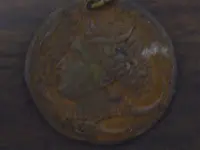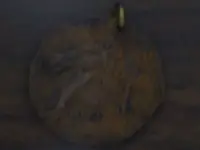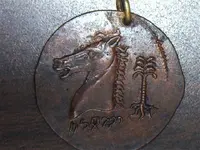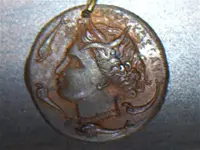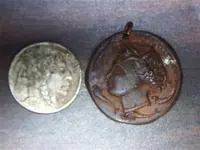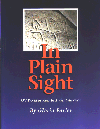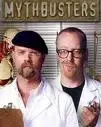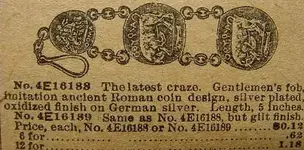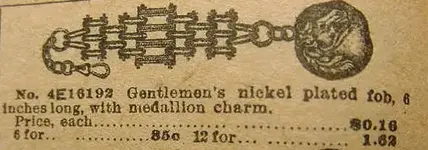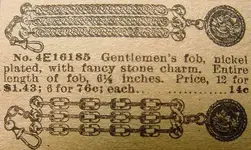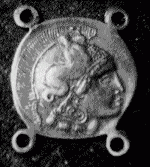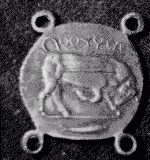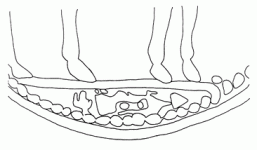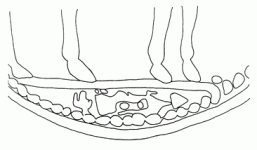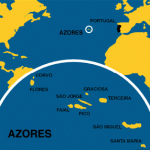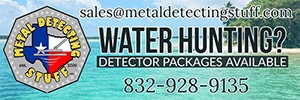IronSpike wrote
Are there any pics of the 1749 Corvo coins?
As far as I know, no photos exist, only hand drawn pictures of them, which were sufficient to ID five types out of the nine examples, plus two of ancient Kyrene, a Greek city-state also in Africa and often allied with Carthage.
BigCypressHunter wrote
[quote[All I am doing is concentrating my unbiased efforts on HH's coin and the Farley coins. You cannot prove the Carthaginians discovered America by presenting turn-of-the-century Sears Roebuck jewelry.
[/quote]
Unbiased? Your own statements certainly hint at a personal bias, but I will take your word that you are un-biased. You have concluded that this example is a
"turn-of-the-century Sears Roebuck jewelry" without having found a match? I am
not saying that HH's coin or token
absolutely and positively IS an ancient Punic or Siculo-punic coin or even a "limes" type of ancient imitative coin, it very well
could be a modern fake - some of the recent fakes are getting pretty good, and those of Becker were very good, but still could be ID'ed by the experts.
I am willing to wait to hear from an expert in ancient Carthaginian coins, like David Sear mentioned earlier.
As for these coins being the whole basis of the theory of Carthaginians reaching the Americas, surely coins will not suffice, even if every example could be proven to be from Carthage, we cannot prove the "provenance" of how and when they got deposited here. They are at best SUGGESTIVE evidence, unless an archaeologist should happen to dig up one in an "official" dig none found by anyone with a metal detector will be accepted by academia as evidence - even though in Europe, Africa and Asia, such finds are indeed taken as solid proof of at least contact with the culture that issued the coins, here in America they are rather automatically dismissed by the historians since they do not "fit" with the official Isolation theory which is taught in our schools. There is quite a bit of other evidence which has better "standing" in the eyes of historians, not so easily dismissed including shipwrecks.
It is an interesting find, regardless of what the experts verdict may turn out to be - I look forward to hearing more.

Oroblanco



